When it comes to white-hat link-building strategies, nothing beats link bait. You create link-worthy content, like comprehensive guides or research reports, and people link to it organically.
Simple?
Well, creating content people will find and want to link to isn’t easy. In fact, 95% of pages have no inbound links whatsoever!
In the article, you will learn what kind of content is the best for link baiting and how to find ideas for content worth linking to. We also share six examples of effective link baits for inspiration.
Let’s get some basics out of the way first, though.
Link Bait Vs. Standard Link Building
Both link-baiting and standard link-building tactics require excellent content.
Traditional link-building is targeted and relies heavily on active outreach to secure backlinks.
For example, you pitch your guest post ideas, chase unlinked brand mentions and broken links, or build partnerships leading to link exchanges.
All these strategies may potentially get you search engines’ bad books because they’re meant to improve your link profile artificially. Especially if you’re paying for the links or offering other incentives.
Link bait, on the other hand, attracts backlinks naturally, without outreach. It’s so valuable, interesting, or provocative that other sites link to it on their own without being asked.
The results of such a passive approach may be less predictable and take longer, but when successful, it results in a natural backlink profile.
Why Does Link Bait Work?
Link bait works because it taps into psychological triggers that drive people to engage, share, and link to content.
For example, people see content as social currency: sharing it makes them look cool or "in the know." Especially, if it covers popular topics covered by thought leaders in their niche.
Feelings play a major role, too. Content that evokes a strong emotional response, like fear, humor, or curiosity, gets more social shares or links.
Link bait also offers practical value. Useful content, like in-depth guides or tools, satisfies specific needs. People link to valuable resources to help their target audience overcome the challenges they face.
6 Perfect Examples of Link Bait Content
To give you an idea of what kind of content attracts high-quality links, here are six successful link bait examples.
Interactive map of Russia's invasion of Ukraine
The map provides a detailed, interactive visualization of the events and developments during Russia's invasion of Ukraine. Updated on a daily basis, it offers information about the land controlled by each side.

Over 1.3K websites have linked to it. Not once. There are, in total, 19.3K links pointing to the page!

Among them, you can find high-authority media outlets like the New York Times (DR94), The Guardian (DR93), and the BBC (DR93).
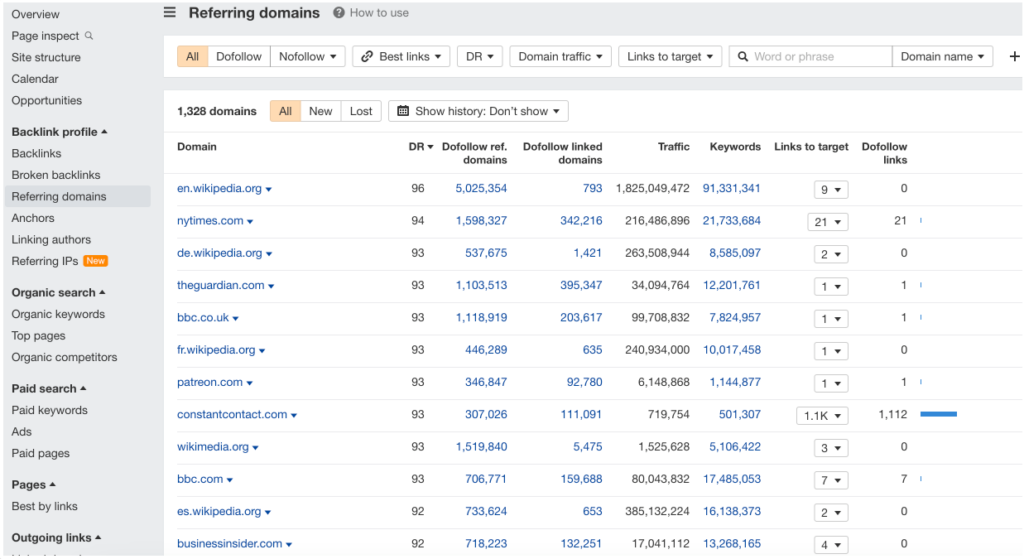
Why it works:
There are two reasons why interactive content like this map attracts so many links.
First, it’s informative and data-rich. It offers data and stats precious to journalists, researchers, and educators.
What’s more, it provides a visually engaging experience that allows users to explore complex topics in a more accessible way.
Ramsey’s Investment Calculator
The Investment Calculator by Ramsey Solutions is an online tool that helps users estimate the future value of their investments.
By inputting details such as initial investment amount, monthly contributions, investment duration, and expected annual return rate, users can project potential growth over time.
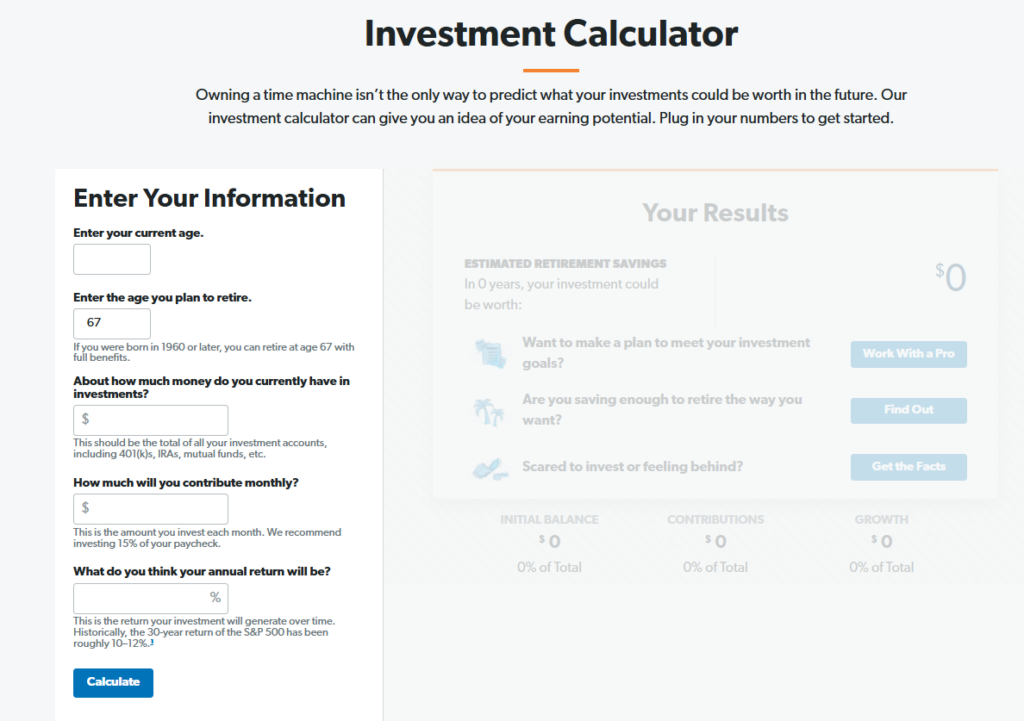
Wondering how successful it is as link bait?
Over 430 websites are linking to it at the moment.

This includes over 30 domains with DR80 and higher, like Yahoo, Stack Exchange, and Nasdaq.
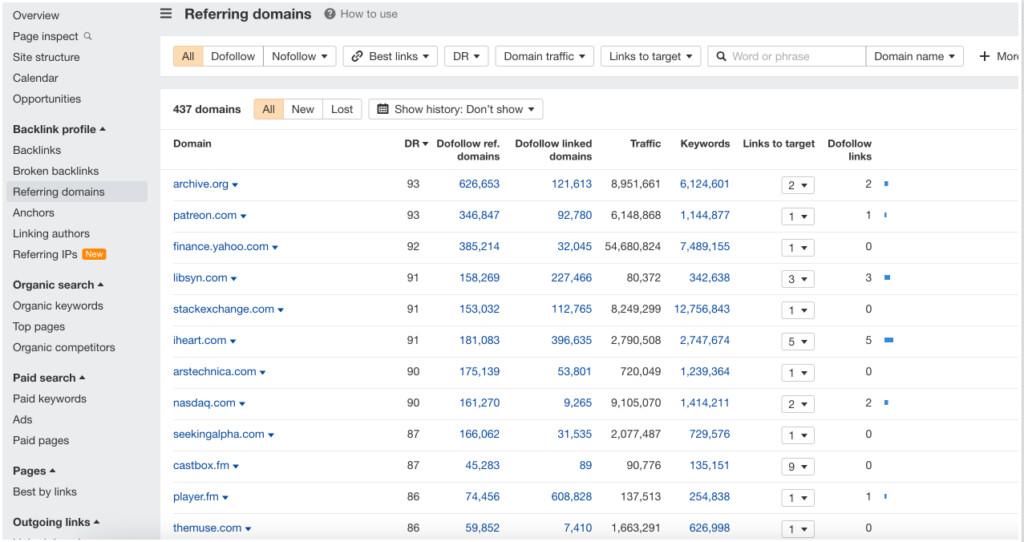
Why it works:
The calculator provides high practical value: it helps users plan their savings and investments to achieve their financial goals.
It also appeals to a broad range of audiences, from young savers to retirees. This means it’s likely to be shared across finance blogs, edu sites, and social media.
Incorporating tools that help customers and have wide appeal can be powerful link bait. For example, our paper calculator brought in significant links because it was so practical and useful.
USA - Flash report, Automotive Sales Volume, 2024
The page provides monthly updates on U.S. automotive sales volumes for 2024. It offers detailed statistics, year-over-year comparisons, and insights into market trends, which makes it a perfect resource for industry professionals and analysts.

The report has attracted over 730 backlinks from 343 unique domains.

This includes DR90+ websites like Business Insider, USA Today, and Yahoo.
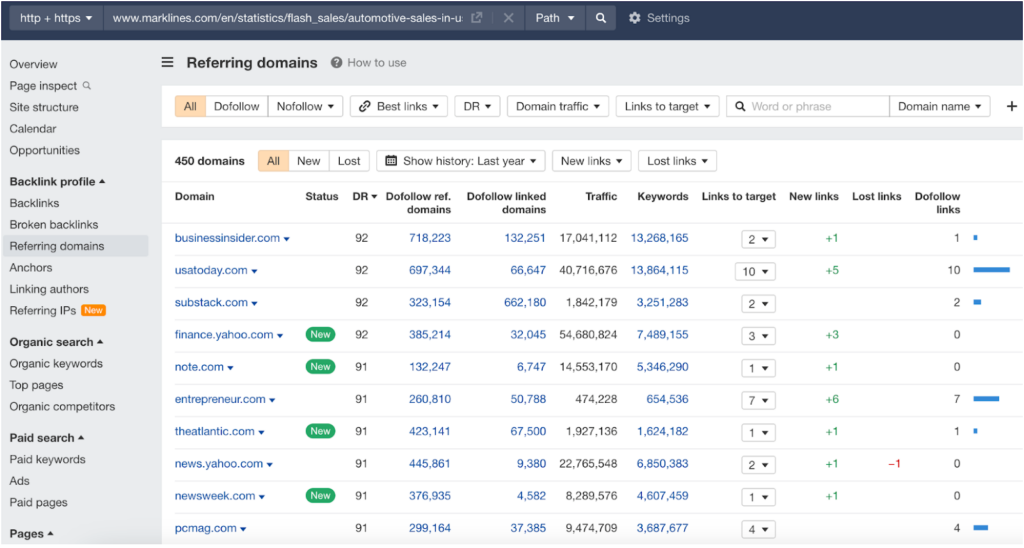
Why it works:
Original research and data studies, for example, industry surveys, case studies, trends analysis, and proprietary data, provide unique insights and statistics that no other sources offer.
Data is highly valuable for blogs, journalists, and industry analysts who need credible sources for their articles. Linking to unique, comprehensive, research-backed statistics or insights adds authority to their content.
“How Google is killing independent sites like ours” by HouseFresh
The article "How Google is killing independent sites like ours" on HouseFresh discusses the challenges independent websites face because of the dominance of large media publishers in Google's search rankings.

This link-bait article currently has over 17K links from 1.1K domains.

The best-known ones?
Wix (DR95), The Guardian (DR93), TechCrunch (DR92), Yahoo (DR92), The Verge (DR92) and Moz (DR91).
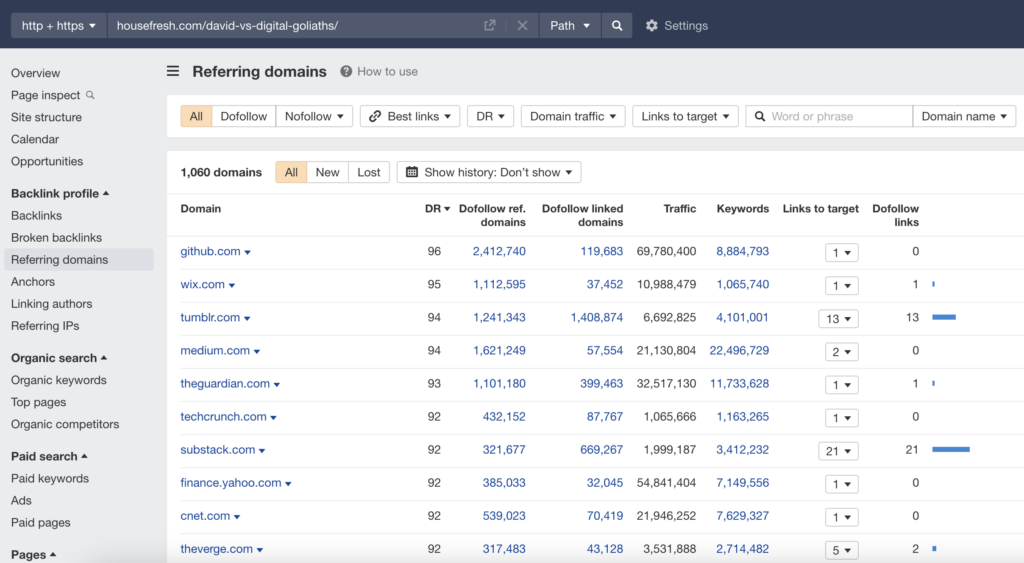
Why it works:
There are two factors that make this article a powerful link magnet:
For starters, it’s topical. It appeals to SEOs whose sites have been hit by Google updates that benefit established publishers, even if they haven’t got the niche expertise that smaller specialist sites do.
Moreover, the topic is controversial. Which generates discussion and drives shares and links.
Controversial opinions work as strong link bait because they attract discussions, creating more engagement and sharing. The key is finding a balance between being provocative and respectful.
“Google’s 200 Ranking Factors: The Complete List” by Brian Dean
The Backlinko blog post, “Google’s 200 Ranking Factors: The Complete List,” provides an extensive overview of factors that influence a website's ranking in Google's search results.
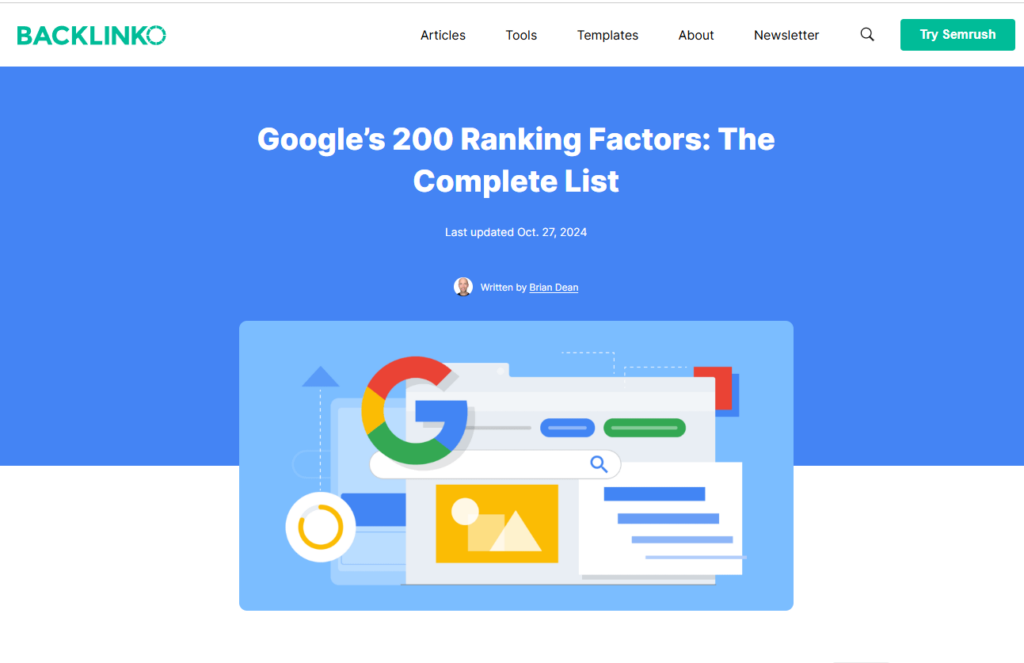
The guide has proved to be extremely successful as link bait. In total, there are 6.2K websites linking to it.

And it isn’t just any domains. They include WordPress, Microsoft, Github, Wikipedia, and Shopify, all of which have domain ratings over 95.
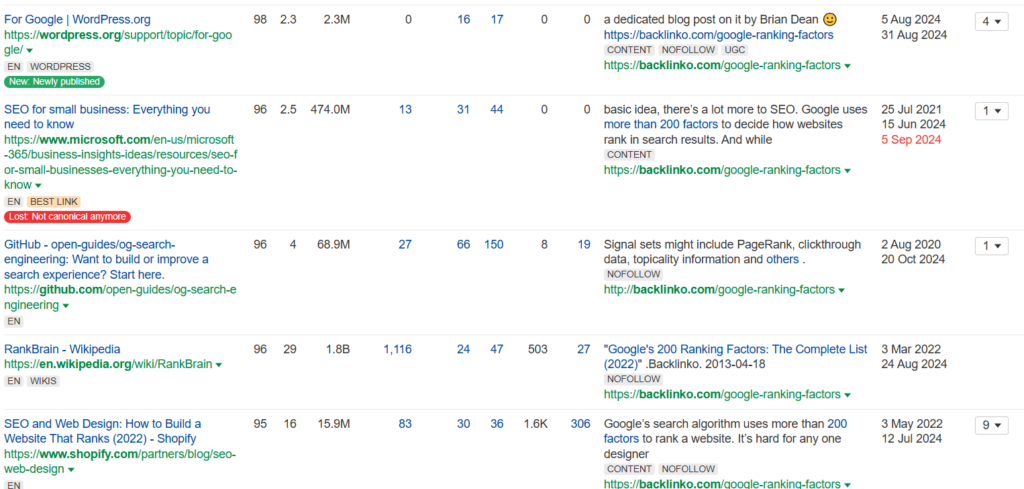
Why it works:
The Backlinko article is the most comprehensive guide on the topic currently available, so readers don’t need to look for other resources.
It doesn’t stop there!
Such guides establish the creator as an authority on the subject and make them the “go-to” expert for a particular topic, which brings more link-building opportunities
Put yourself in the shoes of journalists and publishers who need sources to quote. By creating data-rich resources, you become a go-to for them and build future backlink opportunities.
U.S. News & World Report Software Developer Salary Page
The Software Developer Salary page at U.S. News and World Report provides detailed information about the salary prospects for software developers.

This is an invaluable resource for those considering a career in software development or companies trying to attract top developer talent with attractive pay packages.
Its backlinks profile reflects the value the page offers: 611 websites link to it at the moment.

These include giants like TechCrunch, Yahoo, Atlassian, CNET, and PCMag, with domain authority over 90.
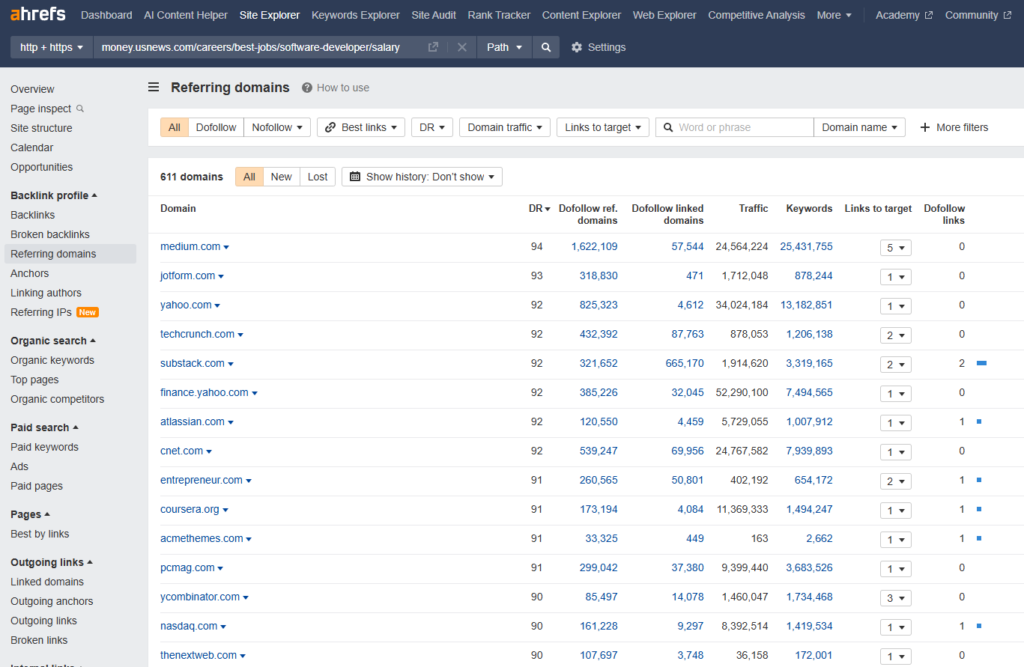
Why it works:
U.S. News & World Report is a reputable publisher, making this page a credible reference for salary data and career information.
It also appeals to a wide range of audiences: high school students considering careers in software development, experienced professionals considering career moves, companies reviewing its remuneration packages, and journalists covering the industry.
However, the page’s main strength is that it offers up-to-date and evergreen content. The demand for software developers isn’t likely to decline, so the page will keep attracting backlinks as long as the webmasters keep updating the data.
How to Find Good Link Bait Ideas?
Finding topics worth covering in your online content is the key to creating successful link baits. Here are a few ways to do it.
Recycle successful topics
Before you search for new content ideas, Jase Rodley, the founder of Dialed Labs, recommends exploring topics that have already proved successful for you and you have expertise in:
Start by looking at topics that have worked for your audience in the past and create guides or tutorials around those themes. By focusing on what you already know and do well you ensure your content remains relevant and valuable to your audience. Straying too far from your niche can be a turn-off.
Analyze competitors
Competitor analysis is a good bet when looking for ideas for evergreen link magnets.
By scanning the best-performing pages, you can quickly identify what kind of topics or formats attract the most backlinks. And if you’re combining link bait with traditional link-building tactics, you can use it to find prospects for your outreach campaigns.
Look how easy it is in Ahrefs:
- In Site Explorer, navigate to the Best by links report.
- Analyze the pages with links from the most referring domains.
Here’s an example: If you’re a product growth platform competing against Appcues, you can see that their ultimate guide to user journey maps is very popular. It has acquired 213 links from 172 domains.
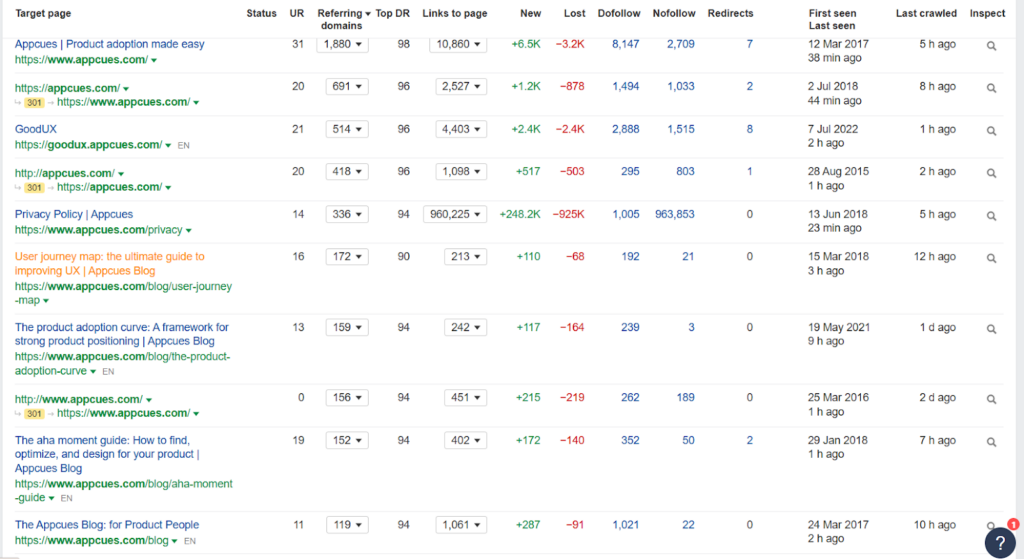
The next step would be to break down the article to identify the reasons why it’s so successful (like its format) and the ways to improve it (e.g., content gaps).
Explore industry trends
If you’re after timely topics, keeping track of industry and social news and trends is the way to go.
Keeping up to date with the market trends is the best way to find link bait ideas. For instance, we are embarking on a huge election, and any content that you can incorporate statistics or shocking data around the election related to your brand or content is going to serve as great link bait.
How to do it?
- Read industry magazines
- Follow influencers in your niche on X and LinkedIn
- Use social media listening tools like Brand24
- Search for trending topics on Google Trends, Answer the Public, and Exploding Topics
Here’s how to use Exploding Topics:
1) Filter the results by time frame. Pick 3 months to narrow down the topics to the most recent ones.
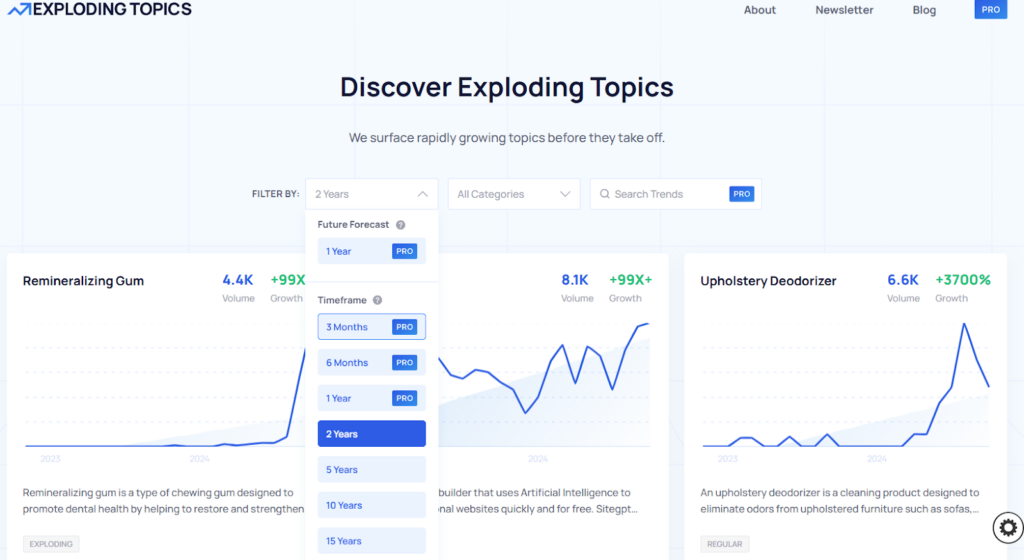
2) Select the category that best describes your niche.
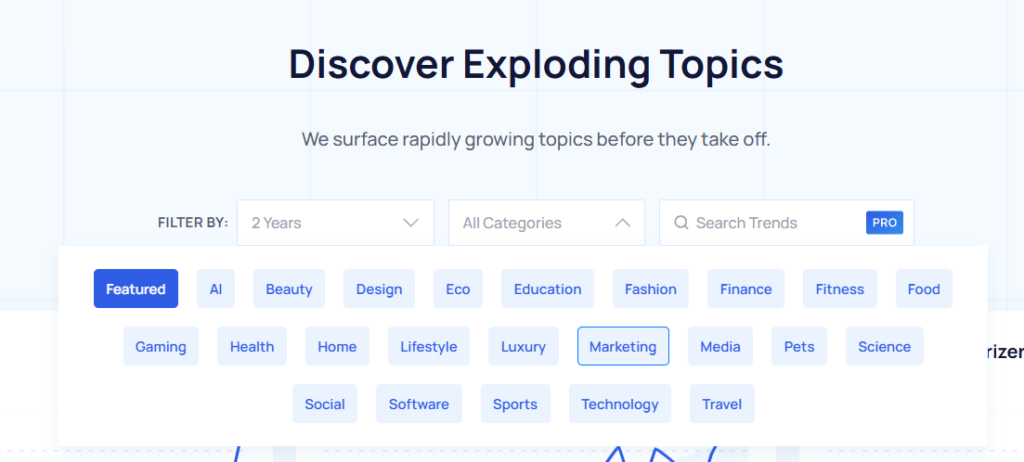
3) Scan the list for trending topics in your industry. When you find one, click on it for more in-depth insights. Enable forecasts to see how likely the topic is to stay on top.
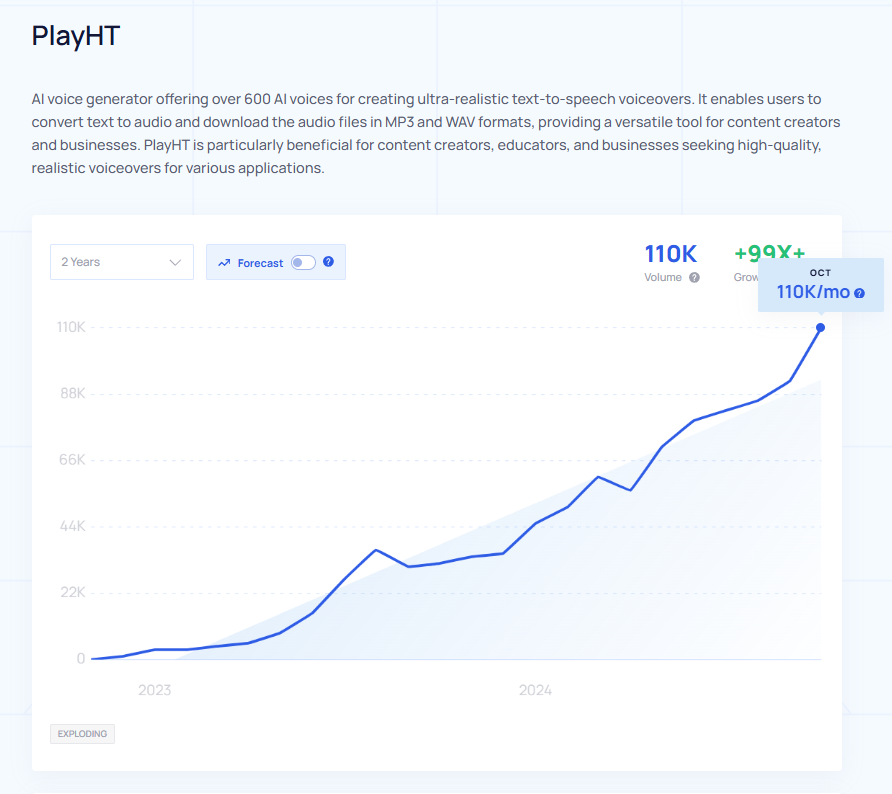
Leverage audience feedback
Monitoring your audience—their comments, FAQs, and social media discussions—can reveal relevant content ideas.
Creating content that addresses common queries or pain points can make it highly linkable.
Cons of Link Baiting
Now that you know what exactly creating a piece of link bait involves, you probably have an idea of what its downsides are.
First, the costs of creating highly linkable content can be prohibitive for teams with smaller budgets. Conducting original research is extremely resource-intensive.
For example, creating our State of Link-Building report took nearly 4 months and cost $4-5k. Preparing the surveys, selecting the experts, outreach, data analysis, writing up the results, design—it all adds up
And the results are far from certain: there’s no guarantee that your piece of content will capture the interest of the target audience or they will link to it. The competition is fierce because content creation is easier than ever, and this makes it harder to stand out, even for superbly researched and well-crafted content.
This is particularly tough for smaller organizations and creators that don’t have an established following. No matter how well you optimize your content for search, your users may not find it if you don’t promote it actively.
And remember: link building isn’t only about PageRank but also about referral traffic. Link bait content may not necessarily attract the right audience in the same way more targeted tactics do.
What’s worse, such resources can quickly lose their relevance if they’re based on current trends or news. When the interest in the topic fades, so does its ability to attract backlinks. Even evergreen content like ultimate guides needs regular updates.
In extreme cases, your link bait can cause backlash from the audience. If it takes a provocative stance or covers a sensitive topic, it can attract negative reactions and harm your brand’s reputation.
Finally, link bait may unintentionally cross into clickbait territory. If your content over-promises or is misleading, users will find it frustrating. The resulting high bounce rates will hurt your organic search visibility.
Final Words
The idea behind link bait is appealing: create high-quality, timely content, and people will link to it naturally. Without outreach or the risk of violating search engine rules.
However, that’s easier said than done.
Creating such pieces of content requires resources and expertise, and you may not be able to stand out from similar content, especially if you’re only starting and aren’t promoting it.
So, I definitely don’t recommend building your SEO strategy around link bait. Use it with other tactics, like guest posting or digital PR link building, to maximize link-building opportunities and create a diverse link profile.
Finding the balance is where reputable link-building agencies can help!
If you need help choosing the most suitable approach to link-building for your business, get in touch with the Editorial.Link team.






